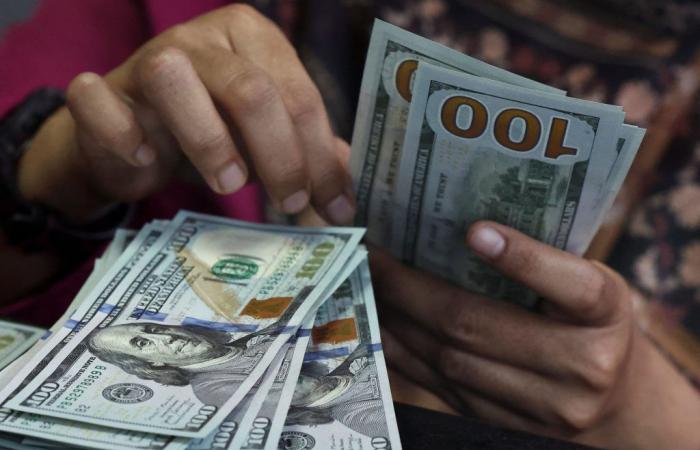The dollar remained stable on Tuesday, but close to the lowest level reached for three years compared to the euro and the hollow of six months compared to the Yen reached last week, while investors had trouble understanding the incessant changes in American customs duties.
Nevertheless, the foreign exchange markets were much quieter at the start of the morning in Asia after last week’s turbulence which strongly shaken the dollar despite an increase in yields of treasury bills, highlighting the fragile confidence of investors in the green tank and American assets.
The dollar was up 0.27 % to 143.53 yen, but remained close to the lowest level over six months of 142.05 reached on Friday. The euro fell 0.22 % to $ 1,1324, just below the highest level over three years of $ 1,1474 reached last week.
After falling at its lowest level for ten years compared to the Swiss franc last week, the dollar increased by 0.3 % in Asia. The dollar is down almost 8 % compared to the Swiss franc this month, which represents its highest monthly drop since December 2008.
The markets have focused on constantly evolving news concerning the customs duties, the United States having removed customs duties on smartphones and other Chinese electronic devices during the weekend, which brought a certain relief, although President Donald Trump’s comments suggested that this stay would probably be short-lived.
The taxation and then the sudden postponement of customs duties on goods imported into the United States by Donald Trump sowed confusion, adding to the uncertainty of investors and political decision-makers around the world.
Kieran Williams, head of exchange operations in Asia at Intouch Capital Markets, said that political confusion and the erosion of investors’ confidence fed a slow but regular rotation of dollar assets.
“The recent decline in American customs duties has appeased part of acute market anxiety, mitigating the dollar attraction as a short -term refuge value. »»
-The yield of the US Treasury Bon at 10, a reference index, stabilized at 4.354 %, after dropping by almost 13 base points during the previous session.
The yields had increased by approximately 50 base points last week, the highest weekly increase in more than two decades, while analysts and investors questioned the status of obligations as the safest active in the world.
“Last week was marked by deleveraging, liquidation and reallocation of assets outside the United States. The tone is calmer this week, which is shortened due to the holidays, “said Prashant Newnaha, a senior strategist in terms of rate for Asia-Pacific at TD Securities.
“The conciliatory comments of Fed officials, suggesting that they are looking beyond inflation, have helped set the tone. »»
Fed governor Christopher Waller said on Monday that Trump administration’s pricing policies are a major shock for the American economy that could lead the federal reserve to reduce interest rates to avoid a recession, even if inflation remains high.
Traders expect 86 Fed’s lower base points for the rest of the year, according to LSEG data.
The dollar index, which measures the American currency compared to six other units, was 99.864, not far from the lowest level over three years reached last week. The index is down more than 4 % this month, which should be its highest monthly drop since November 2022.
The Sterling book remained stable at $ 1,3,1825. The Australian dollar increased by 0.23 % to $ 0.63,415, while the New Zealand dollar increased by 0.41 % to $ 0.58,985. (Report from Ankur Banerjee to Singapore. Edited by Shri Navaratnam)








